How a key part of Skyrim was inspired by making pizza and screaming kids on a rollercoaster
What's in a dragon's roar?
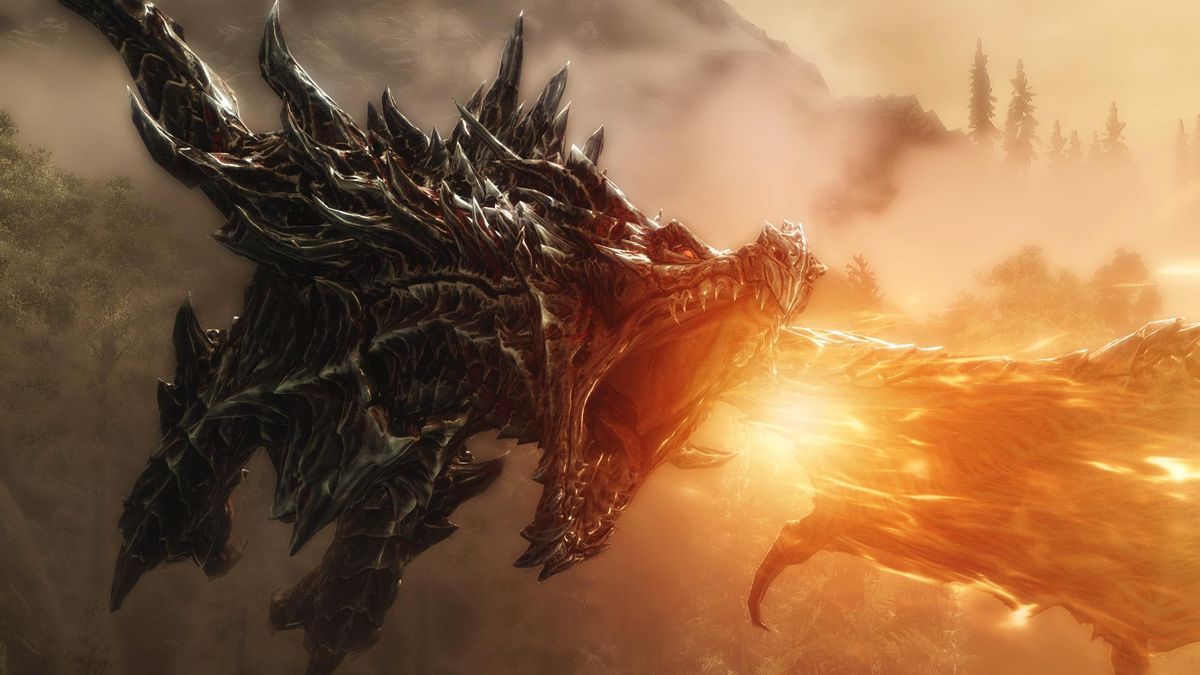
Picture the scene. You’re playing Skyrim. You’re crossing the plains west of Whiterun at dusk, just as the sun slips beneath the Jerall Mountains. The mood is tense, felt by you and Irileth – a Dunmer nightblade and Dragonsreach resident who’s joined you on this particular excursion. The construct before you, a crumbling stone monolith named the Western Watchtower, is engulfed in flames, and plumes of thick, black smoke fill the air. You already know who the culprit is, but they've yet to reveal themselves. “Here he comes!” cries Irileth. “Make every arrow count.”
Kill the dragon, reads an objective prompt, as if you needed reminding. A hulking, winged beast then comes into view, tearing through the sky like a bolt of lightning, swooping through the fire like a phoenix. The creature lands with an earth-shattering crash, parts its jaws, and lets out an almighty, deafening roar. And if you listen closely enough, you can hear… children screaming?
“I wish I could say I planned it,” says Mark Lampert, the audio director on Skyrim. “As I was scanning through our sound libraries, looking for other screams, I found ‘Children Screaming’, ‘Children Yelling’, Children Celebrating’, and all of these other things that I wouldn’t have thought to try. When used on its own, it sounded awful. But when mixed in with everything else, it was perfect.”
Winging it
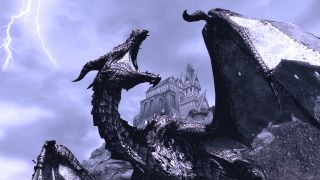
"Emil had curved blades. He had daggers. He had replica weapons from film and TV. He had this enormous, impossible to hide, won't fit in your hatchback, scare-your-girlfriend-off claymore. I borrowed them all."
Mark Lampert, Skyrim audio diretor
When crafting the bone-chilling battlecries of Skyrim’s most iconic baddies, the ‘everything else’ which Lampert alludes to – besides, of course, screaming children on a rollercoaster – are things like the roars of non-fantastical everyday creatures, the rumble and crackle of fire, and even the shouts of a medieval army in the throes of war.
“As soon as somebody came into the room where I was working – probably either Todd Howard or Emil Pagliarulo, the lead designer – and said, ‘that's awesome’, I just stopped working,” continues Lampert. “I don't think I recognised this combination of sounds for the dragons’ roars as, ‘oh, that's the one’, but as soon as there’s a positive reaction, that’s when I leave it alone.”
To be fair to Lampert, dragon fights in Skyrim look and sound fantastic to this day, no matter how the audio for their epochal roars was sourced a decade ago. Indeed, it’s been ten years since the launch of the fifth Elder Scrolls main series entry, and few games have given us the same degree of scope in RPG exploration, combat and narrative since – something that’s directly reflected in the vast number of platforms Skyrim appears on today, and the 100,000+ player-made PC mods keeping the game fresh in 2021.
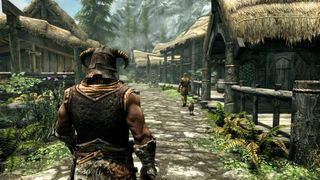
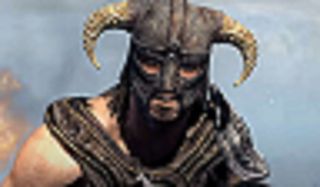
How to level up fast in Skyrim and maximise your progress.
Such a big game, then, demands an equally large portfolio of audio cues and sound effects to match its most blockbuster and diminutive moments alike. And with audio design, the process is often a case of glamour versus reality. Take unsheathing a sword, for example. In-game, the maneuver sounds super cool; a smooth and satisfying, bravery-inducing clang that wills you into battle. But in reality, this sound effect is produced in a recording studio by rubbing metal against a glass bottle, because, so says Lampert, “swords don’t sound like Hollywood, in fact, when you pull a sword from a sheath, it doesn’t sound much like anything.”
Sign up to the 12DOVE Newsletter
Weekly digests, tales from the communities you love, and more
To this end, Lampert says audio designers will use anything they can get their hands on in order to strike the right chord. Whether that’s household items, musical instruments, or, you know, your colleague’s sword collection, nothing is off-limits.
“Emil had many weapons in his office. He’s what you might call, I dunno, a dangerous nerd, maybe,” Lampert continues. “I try to stay on the good side, let’s say that. He likes to collect all sorts of weapons. There was a Chinese sword of some kind, for example, this really ceremonial looking thing. He had curved blades. He had daggers. He had replica weapons from film and TV. He had this enormous, impossible to hide, won't fit in your hatchback, scare-your-girlfriend-off claymore. I borrowed them all.”
“Moreover, the building we work in is always under development, it’s always under construction, getting repaired or expanded, so I’ve always collected little bits of construction cast off. Copper, duct work that workmen have left behind, pieces of rebar metal, anything I can find. I took Emil’s different swords and dragged them against the outside of the sheath’s scabbard, and then against a glass bottle, and then it’s a case of combining them all together, because it’s really difficult to get that SHING! noise you hear in Hollywood movies without being creative.”
Unseen and unheard

"I approach all video games the same, and Skyrim was no exception. I'm always thinking of a pizza, believe it or not. You have this broad base, and your crust. And the crust is always there."
Mark Lampert, Skyrim audio director
Creativity on Lampert’s part is also essential in combat within open-world games, where disabling specific sound effects in order to maintain smooth framerates can be essential. If you’ve ever found yourself battling half-a-dozen enemies out in the wild in Skyrim, backed up by a follower, after having conjured a couple of Familiars, you’ll know how chaotic things can get. In turn, you may have noticed peripheral cues such as NPC footsteps or ambient wildlife dropping out in the heat of the moment – which is all par for the course, especially when random, resource-hogging dragon attacks are a constant possibility.
For Lampert, these moments are any audio designer’s bread and butter. They’re great, but it’s the quieter, more pensive moments in the likes of Skyrim which always keep him on his toes. Striking the perfect balance from a sound perspective, then – when the player is exploring a dungeon or a keep; where the unseen and unheard terrors within are as scary as the scaled beasts outside – is his favourite part of any project.
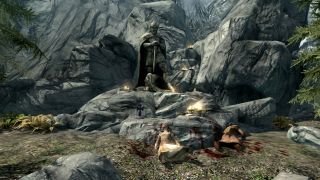
“It's my favourite part, bar none, of any sound design work I've ever done in video games,” says Lampert. “I approach all video games the same, and Skyrim was no exception. I'm always thinking of a pizza, believe it or not. You have this broad base, and your crust. And the crust is always there. That is your background room tones, ambience, the cave, whatever. If absolutely nothing is going on, if the player is not moving, if you turn all of the music off but leave the sound effects on, there will still be at least one stereo loop of the background in the cave.”
“But then on top of that, now you start to have layers on pizza. Wind comes and goes that just plays in stereo, regardless of your position. Now you're getting into the toppings. Crumbles, that you hear in the distance that are positional to the player and, ultimately, you're never in total silence. If we can get that dynamic range dialled up nicely, so that when you do have that break from loud combat music, you know, four foes attacking you at one time, and you run into the cave and they don’t follow you, then that transition from noise to silence, feeling like you're in a hideaway, that’s one of my favourite memories playing these games as a fan before working on them.”
“I always, always want to preserve that, and I don't mind those big transitions. We're not worried about constantly feeding audio to the player and keeping them auditorily busy.”
Right place, right rhyme
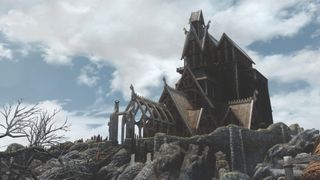
As you might expect, the locations featured in Skyrim’s main quest are among its most visited, which in turn means audio cues, sound effects and theme tunes triggered in the likes of Whiterun, Riverwood and Windhelm are among its most listened to. This makes sense, but, while hailing the scope for curious exploration games like Skyrim offer players, Lampert argues that the audio cues, sound effects and theme tunes triggered in the farthest-flung corners of the game world are even more important, doubling as a reward of sorts for wistful wanderers.
Virtually nothing is off-limits within the bounds of Skyrim’s diverse landscape, and Lampert himself was especially pleased when he first discovered the stomping ground of Nord archer Annekke in a difficult to reach southern portion of the map (and was even more pleased when a seldom-heard slice of audio successfully played upon his arrival). My question to Lampert, then, some 10 years after Skyrim first graced our consoles two generations ago, is: are there any pockets of the map as yet undiscovered?
“Probably,” says Lampert. “But that’s a hard one because I don’t know where they are. That’s a question for the designers. I mean, is there that one designer who’s holding onto that, ‘nope, no one’s gotten to the dungeon where it says call this number’? We might never know.”
Fancy a break from Tamriel? Be sure to check out the best games like Skyrim.

Joe Donnelly is a sports editor from Glasgow and former features editor at 12DOVE. A mental health advocate, Joe has written about video games and mental health for The Guardian, New Statesman, VICE, PC Gamer and many more, and believes the interactive nature of video games makes them uniquely placed to educate and inform. His book Checkpoint considers the complex intersections of video games and mental health, and was shortlisted for Scotland's National Book of the Year for non-fiction in 2021. As familiar with the streets of Los Santos as he is the west of Scotland, Joe can often be found living his best and worst lives in GTA Online and its PC role-playing scene.
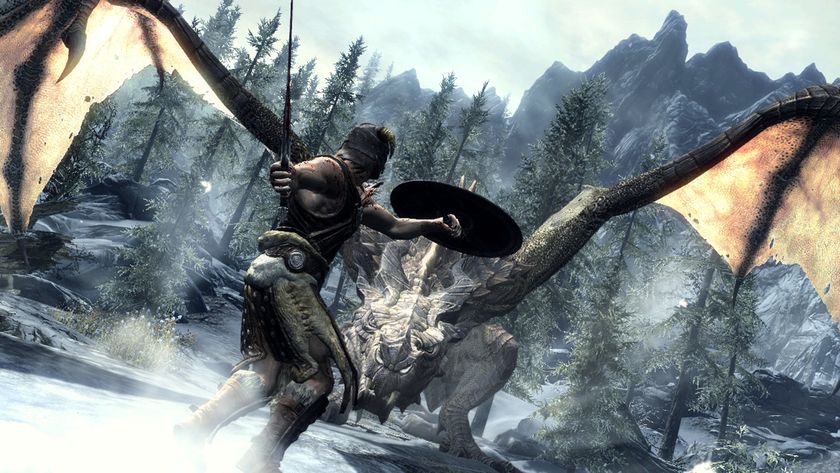
Former Skyrim dev says "a lot of the great stuff" in the RPG came from the devs having "quite a bit of freedom" to create what they wanted, even if it wasn't "on schedule"

While Bethesda celebrates The Elder Scrolls 4: Oblivion's 19th birthday with a "Happy Anniversary" post, fans of the RPG had more in mind: "It would be perfect to... announce something"









